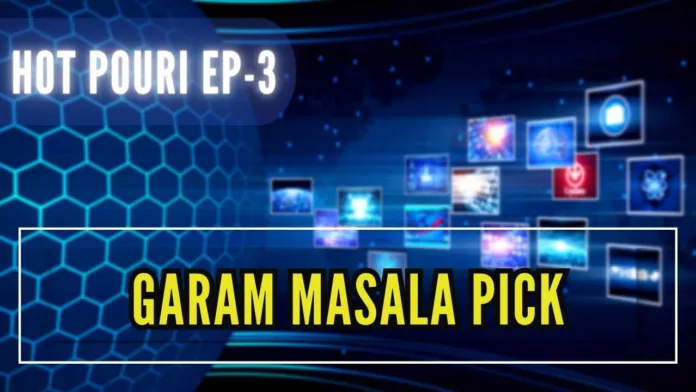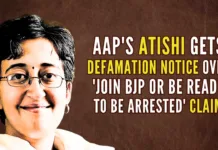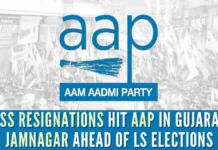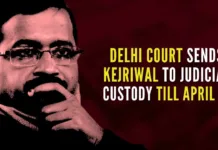
UCC draft focuses on the rights of women: Uttarakhand panel chief
The primary focus of the draft of the proposed Uniform Civil Code (UCC) for Uttarakhand, which will be submitted to the state government “soon”, is on “safeguarding the interests of women, children, and the differently-abled”.
Former Supreme Court judge Justice Ranjana Desai, who heads the expert panel mandated to prepare the draft said that the draft covers issues including marriage, divorce, succession, guardianship, custody, and inheritance.
The draft is expected to be submitted to the state government by the end of July and will likely be the template that the Union government will follow for a pan-India code, according to the people aware of the details.
“The report of the expert committee along with the draft code will soon be printed and submitted to the Government of Uttarakhand,” Desai told reporters in Delhi.
UCC refers to a common set of laws that will subsume customary laws across faiths and tribes and govern issues such as marriage, divorce, inheritance, and maintenance. In the Constitution, it is a part of the non-justiciable directive principles of state policy.
In a 2018 consultation paper, the law commission said, UCC was “neither necessary nor desirable at this stage”. Earlier this month, the law commission again sought views and suggestions on UCC from the public and recognized religious organizations. Moreover, some states such as Uttarakhand have set up panels to explore the implementation of UCC.
UCC contentious point among Opposition parties
The government’s push for a Uniform Civil Code, seen by many analysts as a sharply polarizing issue, seems to have already polarized the opposition parties, with some openly supporting the move, albeit with caveats, while others strongly opposed it.
One constituent of the Opposition group, the Aam Aadmi Party has supported the government’s push for Uniform Civil Code (UCC), another, the Shiv Sena (UBT) wants to see the fine print, but most have opposed it. Still, some opposition leaders are confident that the positions of individual parties on UCC will not adversely affect the unity achieved in their Patna meeting on June 23.
Senior leaders of the Congress and Trinamool argued that they are not expecting all 15 constituents to take similar positions on various political issues. But as in the Patna meeting, the upcoming Opposition meeting in Bengaluru in mid-July will focus on common issues such as federalism, jobs, economic woes, and the Centre’s alleged interference in Opposition-ruled states.
“All 15 parties are not photocopies of each other,” said Trinamool’s Rajya Sabha leader Derek O’Brien. “After the Patna summit, the second summit will consolidate on those issues that we have a 100% agreement on. We are aware that on some issues, all parties will not be on the same page. This is not unusual. There is total agreement at the macro level on the way ahead.”
A senior Congress strategist pointed out that in the Patna meeting, 14 of 15 Opposition parties agreed that there would be unity on a common agenda and that the Opposition parties will fight unitedly against the BJP.
“In the Patna meeting itself, we showed how we can overcome issues of individual parties. AAP’s Arvind Kejriwal was focused on the Delhi ordinance and wanted Congress’ assurance but both West Bengal Chief Minister Mamata Banerjee and former J&K CM Omar Abdullah intervened. Abdullah had told Kejriwal that there are “bigger issues” to be discussed”, this person added.
O’Brien claimed that UCC is BJP’s attempt to divert attention. “When you cannot deliver on jobs, when you cannot control price rise, when you rip the social fabric, when you fail to keep every promise made, all you can do, in your desperation, is to fan the flame with your deeply divisive politics before 2024,” he said.
The issue got a fresh fillip on June 27, when Prime Minister Narendra Modi recently made a strong case for UCC. “These days, people are being provoked by the UCC. You tell me, if there is one law for one person in a home, and another law for another person, can that house function?” Modi asked. As the crowd roared in denial, he said, “We have to remember that even the Constitution of India talks of common rights.”
Another senior Opposition leader said that in the Bengaluru summit, the issue of UCC might be raised by individual leaders but that the summit will remain focused on the strategy for the 2024 elections. “The key agenda is to discuss the electoral strategy, fielding common candidates backed by all parties in maximum seats, and a common agenda for protests and the upcoming monsoon session,” the leader added.
The AAP, which has governments in Delhi and Punjab, supported the UCC and said, “In principle, we support UCC as Article 44 also says that there should be UCC in the country. However, it should be implemented after wider consultation with everyone…”
Shiv Sena (UBT) party president Uddhav Thackeray on Wednesday told members of the Muslim Personal Law Board that his party supported the UCC but needed clarification from the Centre on the possible impact of the law on various communities.
NC leader Farooq Abdullah has slammed the government over UCC. “Our country is diverse and so they should rethink the implementation of UCC. People of different religions live here. Muslims have their own Shariat law and if they (Union government) implement UCC, there could be backlash or possible storm.”
Govt issues fresh clarification on TCS
The Union government issued another clarification on its controversial move to raise TCS (tax collected at source) up to 20% on foreign payments under the Liberalised Remittance Scheme (LRS), saying there shall be no TCS for the first Rs.7 lakh remittance under LRS and beyond this threshold, the levy would be 0.5% if remittance is for education that is financed by a bank loan, 5% if remitted for education (sans bank loan) or medical treatment and 20% for all other purposes.
US force trains NSG, Army to counter CBRNe threats
Ahead of the G20 meeting, the US force trains NSG, and Army to counter CBRNe threats. US and Israel’s commandos to train Indian police for tactics.
Delhi Metro expansion
After Prime Minister Narendra Modi took the Metro to reach Delhi University on Friday, Housing and Urban Affairs Minister Hardeep Puri pointed out the rapid expansion of Metros.
In a tweet, Puri said India’s Metro network was “just 248km in 2014”, which has increased to nearly 860km due to the PM’s “transformational leadership”. In another tweet, he said the PM had chosen “Delhiwallahs’ favorite mode of daily commute” for his trip to Delhi University.
PM Modi to review cybersecurity, enemy threat to India’s critical infrastructure
The PMO has also introduced strong steps to ensure that video conferences chaired by Prime Minister Narendra Modi are not compromised by unauthorized entries or participants.
With mounting cyber attacks on India’s civilian and military infrastructure by rivals in the neighborhood, Prime Minister Narendra Modi is expected to convene a high-level meeting to review cybersecurity and data protection to make the critical structure more resilient to hybrid warfare, people familiar with the matter said.
Stringent steps have been taken in both North and South Blocks with the Prime Minister’s Office (PMO) taking full-scale precautions to ensure that there is no data theft through introduced malware or cyber bugs, the people added. While the government is tight-lipped about cybersecurity, the situation is more critical than it is made out to be by the National Informatics Centre, they said.
.
Although much of India’s concerns come under classified domains, the Modi government is aware of the threat posed by rivals, especially in the region, and is working with friendly countries such as the US and France to build potent firewalls to ward off attacks. The seriousness of the threat can be gauged from the fact that it was Singapore which apparently tipped off India on Chinese cyber-attacks on Indian military installations during the Pakistani retaliation to the Indian Air Force’s attack on terror camps in Balakot on February 26, 2019.
While the Indian military operates within an air bubble and the security agencies are on stand-alone servers, the worry of the Modi government is how to totally firewall government e-mails, health, transport, finance, power, railways, and education critical infrastructure from cyber-intrusions by enemy countries. An attack, which investigators believe originated in China, on AIIMS Delhi servers is just an example of several such believed to have been initiated by India’s northern neighbor. After the US alerted the QUAD partners to Chinese dormant malware—which can be activated on a need basis—in Japan and Australian critical infrastructure, India has joined hands with Washington to not only share information about cyber threats and vulnerabilities but also to work together to investigate and respond to cyber incidents.
The India-US joint statement after PM Modi’s visit to the US this month stated: “PM Modi and President Biden reaffirmed their countries’ commitment to an open, secure, inclusive, safe, interoperable and reliable internet, and to continuing cooperation on a range of cybersecurity issues, including preventing and to responding to cyber-threats, promoting cybersecurity education and awareness and measures to build resilient cyber infrastructure”.
On the military front, there are plans to expand the strength of cyber command, which is staffed with a limited number of officers as compared to either the US or China. The cyber command will have three centers—two in the north and one in the south—to not only defend India but also to counter the cyber challenge. With Quad being a group of open and functional democracies, the four countries are also joining hands on the cybersecurity front by sharing technologies and information to counter the threat from the Middle Kingdom and its client states.
Come clean on meet in US with activist tied to Soros, BJP dares Rahul
Launching a fresh attack on Rahul Gandhi, BJP on Wednesday asked him to come clean on his meeting in the US with Sunita Vishwanath, an activist linked to controversial billionaire George Soros.
Union Minister Smriti Irani also said the Congress leader ought to come clean on the involvement of Jamaat-e-Islami in his recent US events. Talking to reporters, Irani released a photo of Rahul with Vishwanath and said he should state what transpired during his meeting with the associate of Soros who has publicly declared his intention to destabilize India’s democratically elected government. “Rahul Gandhi is sitting in America with a lady, Sunita Vishwanath, a lady funded by George Soros. Only Mr. Gandhi can reveal the purpose,” she said.
When it is known to every Indian what George Soros intends to do, why is Mr. Gandhi hobnobbing with those who are funded by him? It’s also evident that this is not the only Soros connection. Even in Mr. Gandhi’s Bharat Jodo Yatra in Karnataka, the global VP of Open Society Foundation, funded by Soros, was found accompanying Mr. Gandhi,” Irani said. Soros, a currency speculator, made his fortune by shorting the currencies of various countries and has since deployed part of his funds through his organization Open Society Foundation to undermine governments that don’t suit his beliefs. Irani, who had defeated Rahul in the latter’s constituency Amethi in the last LS polls, said Congress was so obsessed with returning to power that it could join hands with those who had intentions to destabilize the government. Irani said Congress had denied her charge about Rahul’s links with Soros and the “evidence” she’d brought had proven her right.
After a row with the Centre, Karnataka to give cash instead of extra rice pledged in 5 guarantees
After having failed to procure from the Centre the required quantity of rice to roll out its Anna Bhagya scheme, the Karnataka government on Wednesday decided to pay Rs.34 per kg for the additional 5 kg of the foodgrain promised to BPL (below the poverty line) families. Anna Bhagya is one of the five pre-poll guarantees issued by Congress.
It is a temporary measure. To keep our word, we have decided to give cash. As and when we get sufficient rice, the cash disbursements will be stopped and rice will be distributed,” CM Siddaramaiahsaid. He said the government had decided to go for an open-market tender to procure rice, the process for which will start on Thursday. Food and civil supplies minister K H Muniyappa said each member in BPL families will get Rs 170 from July 1. If there are five members in a BPL family, it will receive Rs.850 a month and the money will be deposited in the bank account of the head of the family through direct benefit transfer (DBT), he added.
However, about 14 lakh families which are over and above the limit of PDS card holders set by the Centre will not get the cash benefit as of now. The Centre has set a limit of 70 lakhs PDS cards for Karnataka, but the state has provided BPL cards to additional 14 lakh families, taking the total number of BPL cards to 84 lakhs. The state government is exploring ways to provide free rice to these 14 lakh families. “We need about 22,000 tonnes of rice for them. Procuring this quantity will not be a problem for our government,” state minister H K Patil said. In the run-up to the recent assembly elections, Congress, in its manifesto, had promised to increase the quantity of rice provided monthly under PDS to BPL families from 5 kg to 10 kg. Soon after forming the government, Siddaramaiah announced the scheme would be rolled out from July 1. But, the government’s plan ran into rough weather after FCI refused to sell any additional quantity of rice to Karnataka, following a directive from the Centre.
NSA Ajit Doval’s visit to Oman
During his day-long trip to Oman, National Security Advisor Ajit Doval visited the strategic Port of Duqm where Muscat has given access to the Indian Navy to facilitate its presence in the Indian Ocean Region.
Besides engaging with the top leadership of Oman on Monday, Doval visited the Special Economic Zone at Duqm (SEZD) located at a distance of nearly 550 sq km from Muscat, officials said. SEZD is spread over 2,000 sq km.
The local authorities gave a presentation to Doval on various opportunities for investors, including the possibility of 100% ownership, exemption from taxes, and promotional prices with preferential grace periods, officials said. Oman wants to create strategic oil reserves in Ras Markaz near Duqm.
The Port of Duqm overlooks the Gulf of Oman, the Indian Ocean, and the Arabian Sea. Duqm will play a key part in India’s maritime strategy concerning the Indian Ocean, where China is expanding its presence. Being located to the northwest of the Indian Ocean, the port can provide India easy access to the Red Sea as well, via the Gulf of Aden.
Oman is India’s oldest strategic partner in West Asia and an important ally at the Gulf Cooperation Council, OIC, the Arab League, and the Indian Ocean Rim Association fora. The Oman-India defence cooperation has emerged as a key pillar of the strategic partnership between the two countries. Oman is India’s closest defence partner in the Gulf region and an important anchor for India’s defence and strategic interests. Defence cooperation has emerged as a key pillar for the robust India-Oman strategic partnership. Defence exchanges are guided by a framework MoU that was recently renewed in 2021.
At the Port of Duqm, Oman has offered logistical facilities to the Indian Navy and the two sides had signed two critical defence-related MoUs in 2021, an official recalled. Oman, which holds a tri-service joint exercise with India, is expected to play a critical role in enabling New Delhi to maintain its role as a net security provider in the Western Indian Ocean Region where China has embarked on a plan to boost its strategic presence.
In 2021, the Indian Navy and the Royal Navy of Oman signed an MoU in exchange for white shipping information. The MoU is facilitating information exchange on merchant shipping traffic.
Tomatonomics
A steep rise in tomato prices tells a bigger story – of climate shocks and poor cold chain infrastructure.
The southwest monsoon on June 28 was 16% below normal, following both a rapid advance and heavy precipitation in the second fortnight of the month. This development, however, is tempered by three other aspects that cloud the outlook for agricultural output and food inflation. As the monsoon began to pick up the pace, the market for some vegetables witnessed a surge in prices – tomato prices are hitting headlines now. While the surge accounts for events before the monsoon, it highlights the inadequacy of using the average seasonal rainfall to gauge the impact of farm output and inflation. GOI’s weighted average price for tomato arrivals across markets on June 26 showed that at Rs.4,011/quintal, it was 66% higher than a year ago. Among the factors that led to this surge are unusually high temperatures and pest attacks three months ago.
It’s an example of the higher level of risk farmers now bear on account of extreme climate events. The other two intertwined aspects that lead to uncertainty are the El Nino phenomenon and the prospect for paddy. El Nino is a climate pattern that comes from the unusual warming of surface waters in the eastern Pacific Ocean. It can lead to both a reduction in rainfall here as well as disturb its distribution. This is an El Nino year. RBI in a study last week concluded El Nino years are generally ones where agricultural output is adversely affected. The most significant risk it poses is to paddy, the most important crop of the kharif season. On June 23, paddy acreage was 35% lower than last year following the delay in the monsoon’s onset. Add to this a relatively common rice stock with GOI. In June, the central pool stock of rice was 26. 2 million tonnes, the lowest level in five years. The size of GOI’s stock influences price expectations. In this context, it’s pertinent that on June 26, the weighted average market price of paddy arrivals had risen 9% year-on-year.
The other point, especially for vegetables, is that India’s cold chain infrastructure is not expanding fast enough. Cold chains can offset higher climatic risks by reducing wastage and price volatility in perishables. Monsoons remain a potential source of supply shocks and the best way to insulate the economy is to upgrade infrastructure.
Valued punch liner
Prime Minister Modi’s address to the joint session of the US Congress was undoubtedly a hit with 15 standing ovations. Modi read his lines from the fiberglass teleprompter. Inputs for the speech came from India’s Ambassador to the US, Taranjit Singh Sandhu, NSA Ajit Doval, and Foreign Minister S Jaishankar, who oversaw the final draft. But it is suspected that many of the punch lines, which pushed the right buttons with the Americans, were the brainwave of the Indian Ambassador in Paris, Jawed Ashraf, who has spent several years in the USA as a diplomat and has an understanding of US culture and history.
Ashraf has written many important prime ministerial speeches including Manmohan Singh’s nuclear deal speech to the US Congress, Vajpayee’s speech to the US Congress in 2000, Modi’s speech in Kazakhstan on Central Asia, and Modi’s speech at the Shangrila dialogue in Singapore. Ashraf has worked in the PMO under both Singh and Modi.
PGurus is now on Telegram. Click here to join our channel and stay updated with all the latest news and views
For all the latest updates, download PGurus App.
- Supreme Court rejects plea to tally all VVPAT slips with EVM votes; says ‘no going back to paper ballot’ - April 26, 2024
- US report citing human rights violations is deeply biased: India - April 25, 2024
- Kotak Mahindra Bank shares tank 13%. Market Cap erodes by Rs.37,721 cr post-RBI action - April 25, 2024










